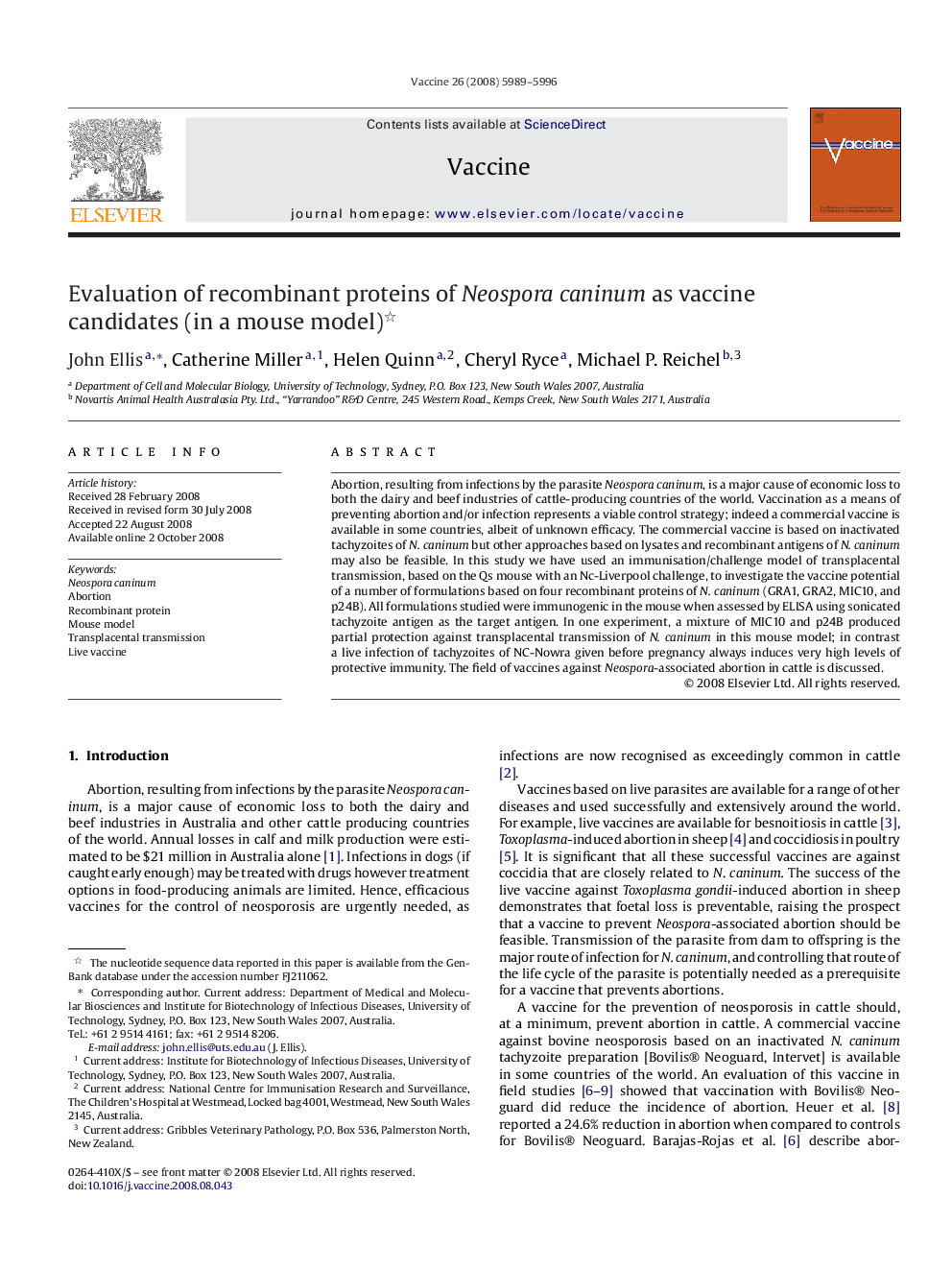| Article ID | Journal | Published Year | Pages | File Type |
|---|---|---|---|---|
| 2406083 | Vaccine | 2008 | 8 Pages |
Abortion, resulting from infections by the parasite Neospora caninum, is a major cause of economic loss to both the dairy and beef industries of cattle-producing countries of the world. Vaccination as a means of preventing abortion and/or infection represents a viable control strategy; indeed a commercial vaccine is available in some countries, albeit of unknown efficacy. The commercial vaccine is based on inactivated tachyzoites of N. caninum but other approaches based on lysates and recombinant antigens of N. caninum may also be feasible. In this study we have used an immunisation/challenge model of transplacental transmission, based on the Qs mouse with an Nc-Liverpool challenge, to investigate the vaccine potential of a number of formulations based on four recombinant proteins of N. caninum (GRA1, GRA2, MIC10, and p24B). All formulations studied were immunogenic in the mouse when assessed by ELISA using sonicated tachyzoite antigen as the target antigen. In one experiment, a mixture of MIC10 and p24B produced partial protection against transplacental transmission of N. caninum in this mouse model; in contrast a live infection of tachyzoites of NC-Nowra given before pregnancy always induces very high levels of protective immunity. The field of vaccines against Neospora-associated abortion in cattle is discussed.
